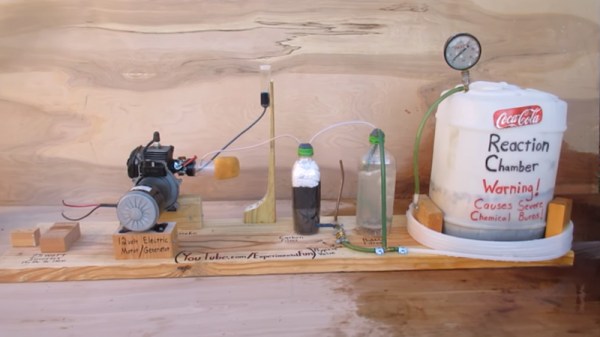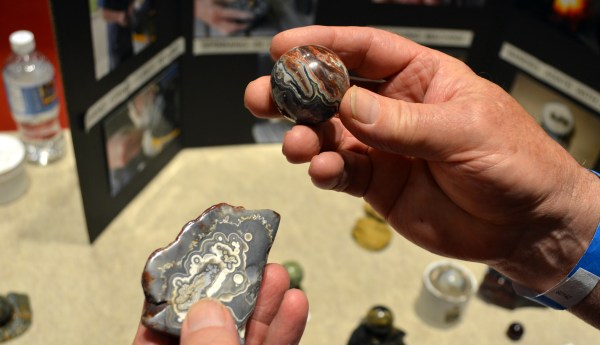[Experimental Fun] shows us how you can create a cola power generator that runs on nothing more than cans of cola including the container and a little bit of sodium hydroxide to speed the reaction up.
This might sound a bit crazy, but it seems you can power an engine on little more than your favorite fizzy drink and the cut-up remains of an aluminum can. What happens is that aluminum and water create a chemical reaction when mixed together, which gives off hydrogen. Normally this reaction is very slow and would take years to make any noticeable marking on the aluminum, but with a little help from sodium hydroxide the reaction is sped up to such a rate that hydrogen is produced quite quickly.
The crazy contraption they created has a reaction chamber which then feeds the hydrogen through condenser then to a bubble filter made from a bottle filled with water. After that it is on through a carbon filter to get rid of any impurities, and finally it is fed directly into a two-stroke engine’s fuel line. Then engine still needs an electric start from a battery, but after that it runs directly on the hydrogen created during the reaction from the chamber.
This is quite a cool project, however you could replace the fizzy drink with water and still get the desired effect. Since the drink comes with the aluminum cans it seems like quite a good fuel though. There are other crazy fuels out the for the avid DIY hacker, but just be careful and don’t blow yourself up.















